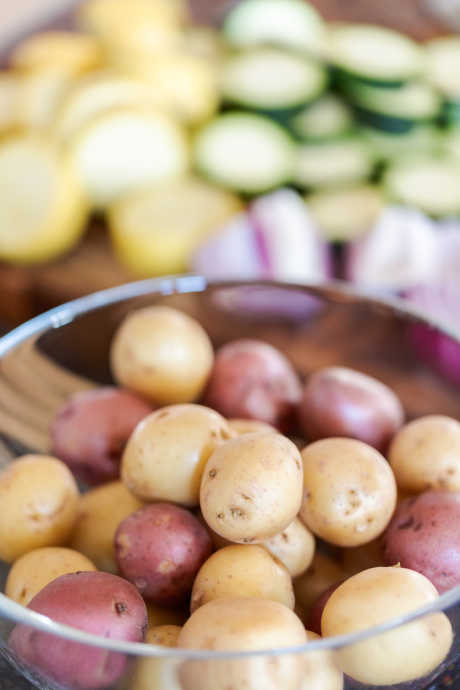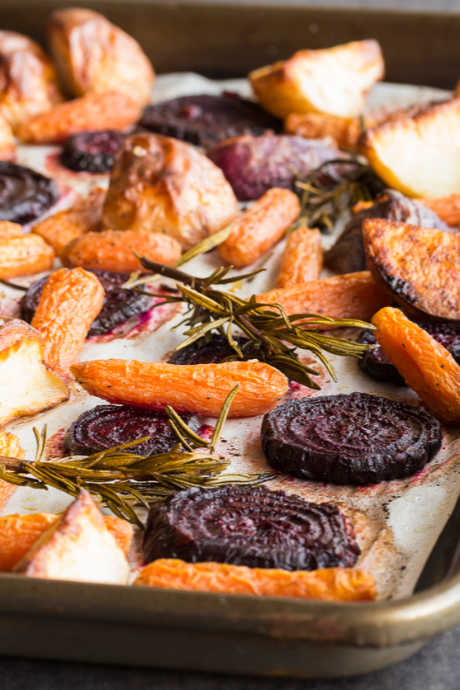Delicious and Nutritious: Tips For Roasting Vegetables
Posted by Julie on Mar 11th 2019
It’s common for kids to dislike vegetables, but too many adults avoid them too. We’ll admit vegetables can be unappetizing when they aren’t cooked well. That’s why we’ve encouraged readers to try grilling vegetables in warmer weather. But what about those cold winter months when grilling isn’t an appealing option?
Crank up your oven and get ready to roast those veggies. It’s the time of year when we’re grateful for the high heat of the oven, and roasting can be a delicious way to prepare vegetables. We’ve gathered the best tips and tricks we could find to help ensure your roasted vegetables turn out crisp on the outside, tender on the inside, and savory all the way through.
Roasting Vegetables: Prep Your Veggies
You can roast nearly any vegetable in the produce section (though we wouldn’t advise roasting leafy greens). The trick is to organize them according to cooking time. The denser the vegetable, the longer it will take to cook thoroughly. Harder root vegetables like potatoes, squash, carrots, and onions are more dense and will take up to 45 minutes to roast. Softer, more airy vegetables like broccoli, cauliflower, mushrooms, and Brussels sprouts will finish in less than half an hour.

Cut all of your dense vegetables into pieces of similar size. It doesn’t matter if they’re all bite-sized bits or large chunks, as long as each piece is as big or small as the others. Cut your softer vegetables into pieces of similar size too, but these pieces can be somewhat larger than the hard vegetables. Remember that it will take a large broccoli floret less time to cook than a slice of sweet potato.
Because contact with the hot roasting pan will make your veggies brown, cut them in a way to maximize surface area. For example, try slicing carrots and potatoes on the diagonal, and chop through the center of broccoli and cauliflower florets to produce flat surfaces.
Toss your prepared vegetables with oil and salt. Each piece should be coated with enough oil to shine, but not so much that they get soggy and won’t brown properly. Toss and season each type of vegetable separately -- keeping all the potatoes together, all the carrots together, and all the broccoli together.
You can either roast the harder vegetables on a separate tray from the softer vegetables, or you can place them in different sections of the same tray. The reason for arranging your veggies this way is to make it easy to remove the ones that are done and slide the rest back into the oven. Either way, be sure to place the largest side of each piece against the surface of the tray, and allow room between pieces. If your vegetables are crowded or overlapping, they will steam instead of roasting.
Roasting Vegetables: Prep Your Pan and Oven
If you have a convection oven or an oven with a convection setting, congratulations! You’re practically guaranteed delicious results. A convection oven is ideal for roasting vegetables, thanks to how it circulates hot air to remove steam. For those of us who aren’t so lucky, we’ll need to prepare slightly differently in order to achieve similar results.
Start with your roasting pans. Metal conducts heat more effectively than glass, so the cut side of your vegetables will brown better if you use a metal pan. Likewise, a sheet pan with low sides will allow moisture to escape so you don’t steam your veggies. Better yet, preheat your pan before arranging your vegetables on it. You can preheat the pan along with the oven while you prepare your vegetables.

How hot should your oven be? The general guidance we found ranged from 425°F to 500°F. The argument for cranking the heat to 500°F is that at lower temperatures, you’re baking instead of roasting. On the other hand, 425°F will allow your vegetables to cook through without browning too much. We suspect the harder vegetables can handle a higher temperature, but we’d scale it back for broccoli and cauliflower to avoid scorching them.
Finally, the most curious piece of advice we saw came from Bon Appetit. Instead of placing your roasting pan on one of the oven racks, they suggest putting it right on the oven floor. Here’s why:
Essentially, you're turning the oven floor into a large, flat, high-heat burner, and your sheet tray into a large, flat sauté pan.
The intense heat emanating from the bottom of the oven browns the cut side of your vegetables more effectively, and the ambient heat inside the oven cooks the inside of your vegetables. It may sound odd, but it makes sense.
If you’re not ready to try roasting on the oven floor, simply set your pan on a rack in the lowest position in your oven. You won’t get the saute pan effect, but it will work fine.
Roasting Vegetables: Time to Cook
If you’re cooking a wide variety of vegetables, now is the time you’ll be glad you separated them. You have a couple of choices in cooking strategy. One, you can put one pan full of hard vegetables in the oven and hold onto the second pan holding the softer ones. Two, you can put your single pan of vegetables in the oven, with hard vegetables already arranged and space left for the softer ones. After 20 minutes on the oven, add the softer vegetables. Then roast for another 25 minutes. This strategy helps ensure every vegetable cooks for the proper amount of time.

You’ll want to flip the vegetables at least once as they roast, so more than one side will brown. Use tongs or a spatula to help keep the varieties separate. While you can time it to flip all the pieces halfway through, it’s also just as effective to keep an eye on them. If you check your vegetables frequently, you can avoid overcooking or scorching them.
Finally, when it’s time to transfer them to a serving bowl or platter, try squeezing fresh lemon juice over the top. You can also sprinkle them with fresh herbs, grate Parmesan cheese over them, or add a dusting of spices. We’re confident even the most avowed veggie-haters will grudgingly admit that roasted vegetables are delicious.

